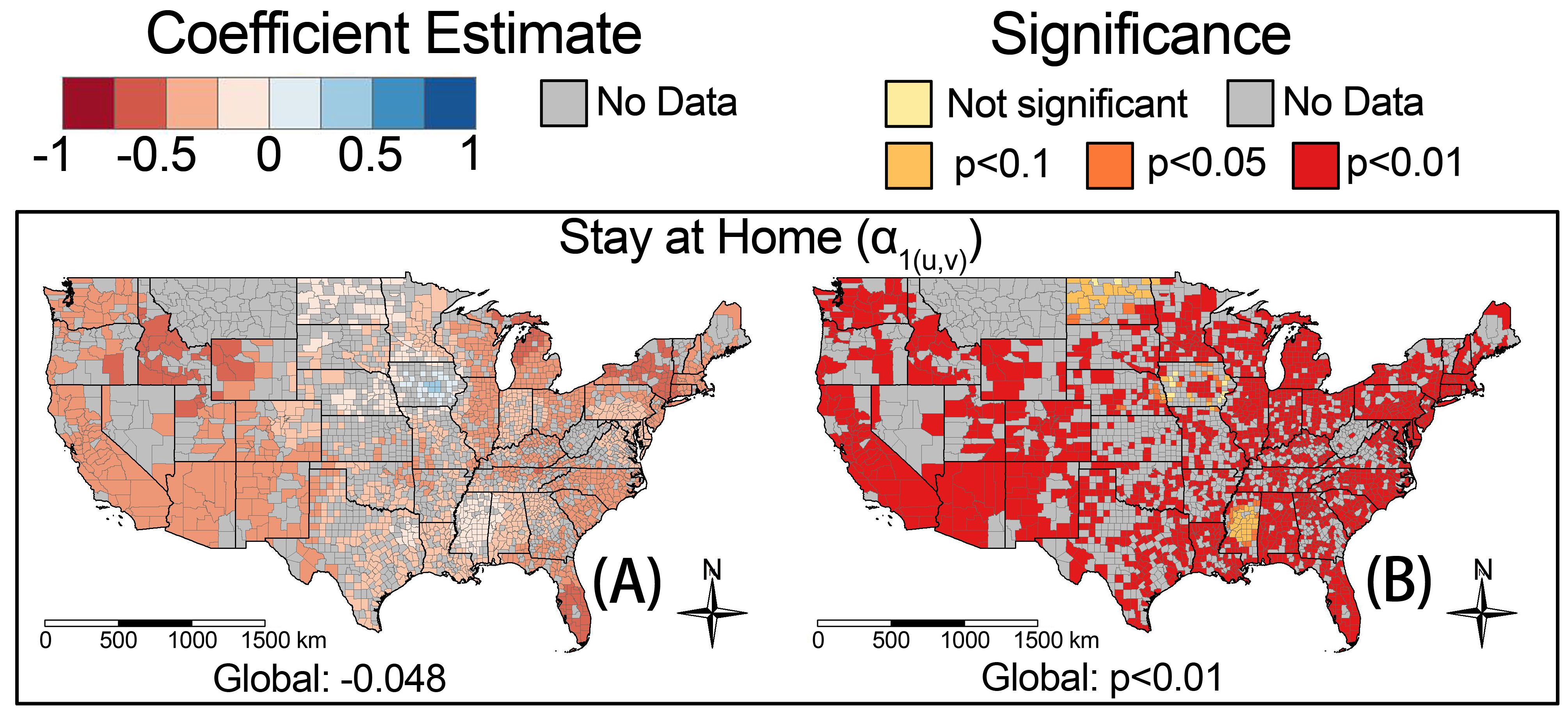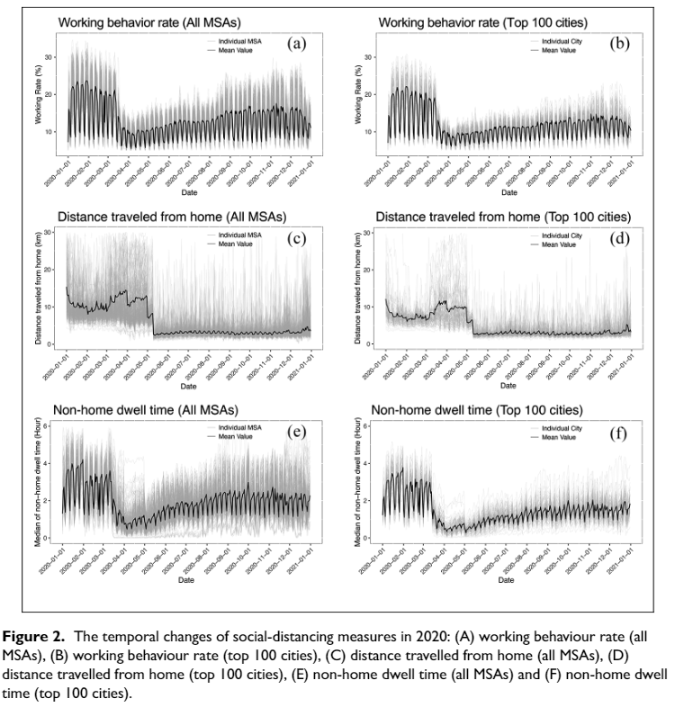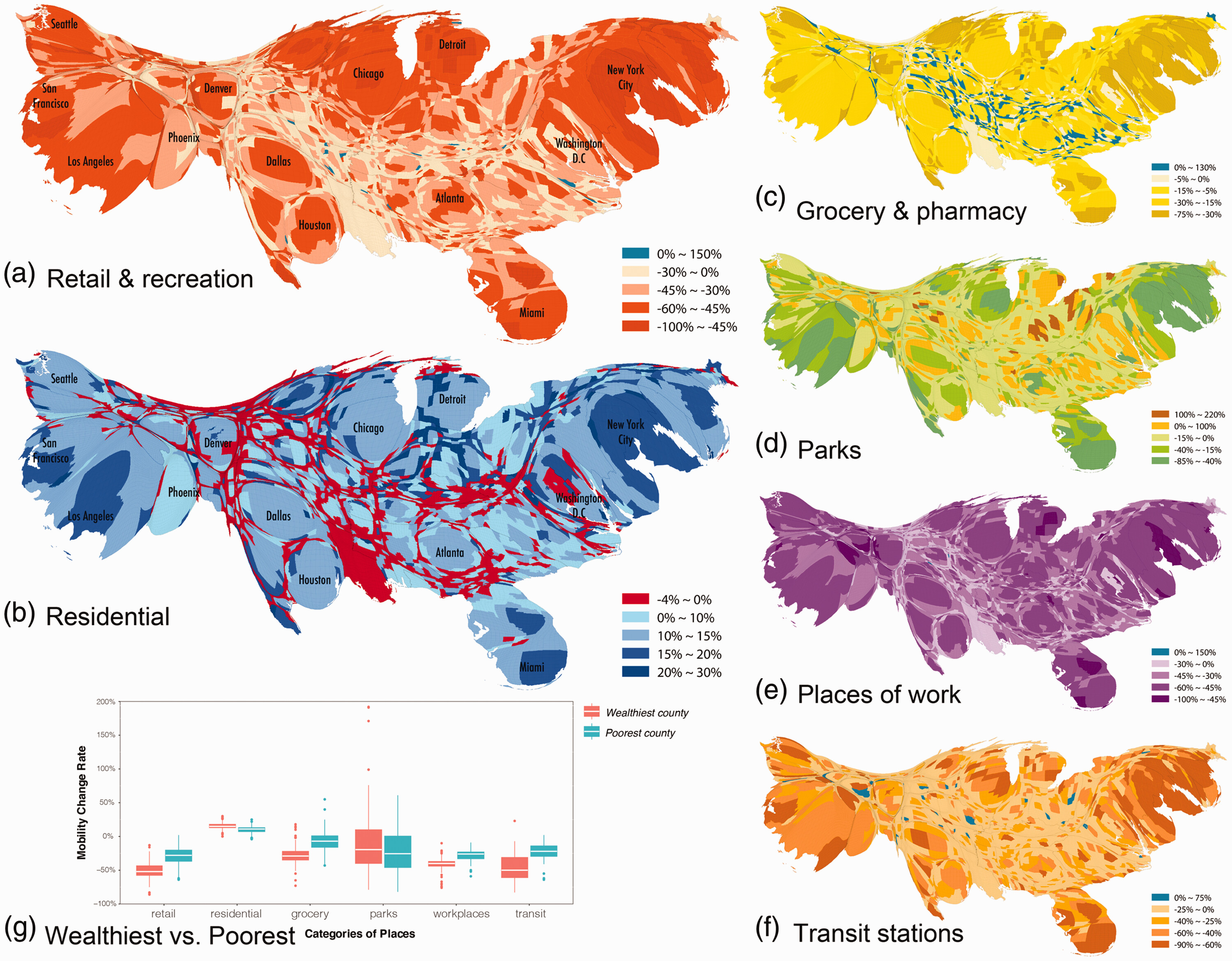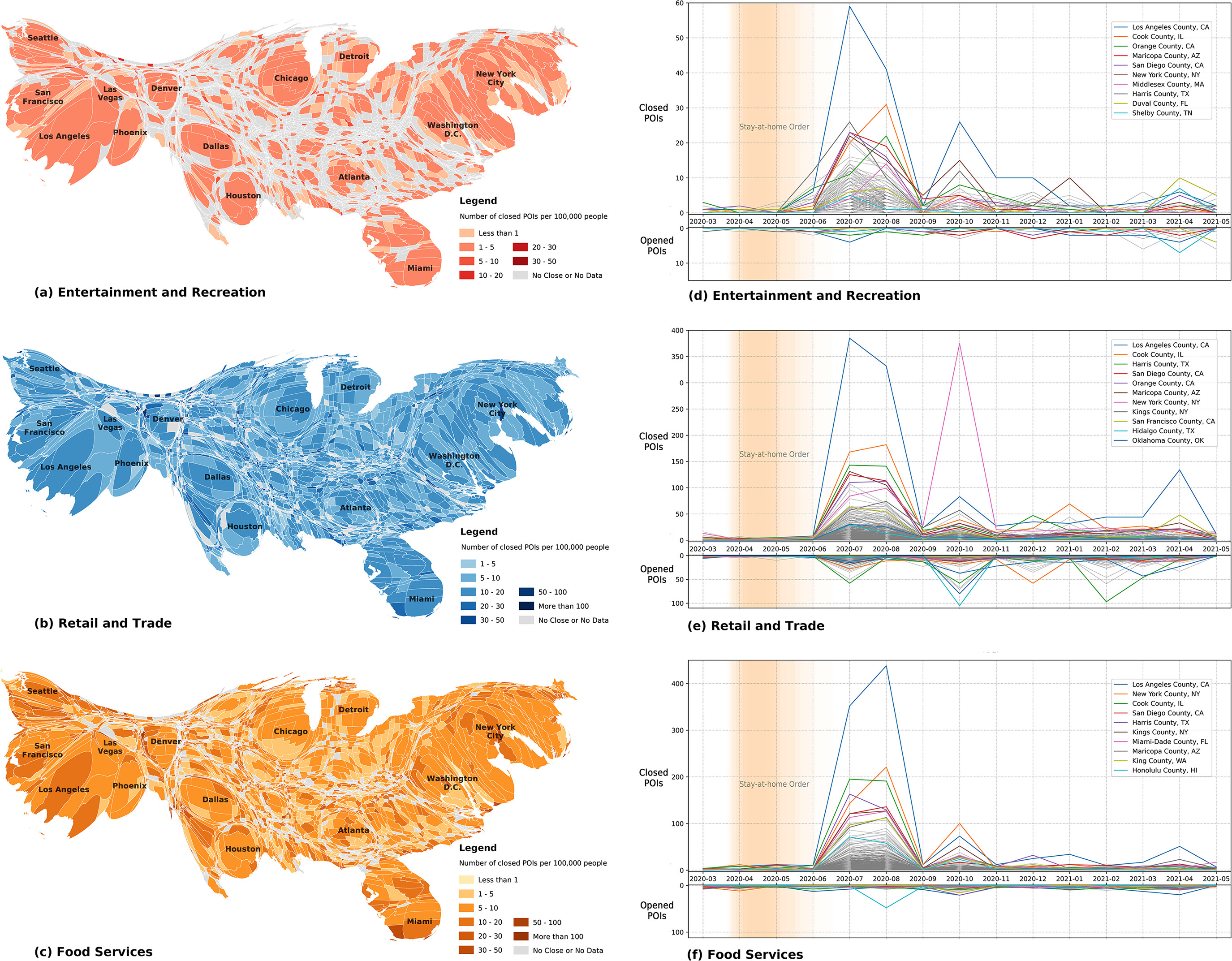Research Theme 3—— Resilience and Social Vulerability During COVID-19
Paper 1: American Inequality Meets COVID-19: Uneven Spread of the Disease across Communities
- The spatially uneven viral spread and community inequality will jointly bring about worse consequences. The combined effects on U.S. communities remain unclear, however. Given spatially heterogeneous compliance with the stay-at-home orders and the varying timing of local directives, the uneven spread should be further examined. In this research, we first exploited county-level data to study the spatiotemporal pattern of viral transmission by a Bayesian approach. We then examined the uneven effects of socioeconomic and demographic variables on viral transmission across U.S. counties using geographically weighted panel regressions.
- Keywords: COVID-19; social vulnerability; stay-at-home behavior; stay-at-home order


- Paper 2: The impact of ethnic segregation on neighborhood-level social distancing in the United States amid the early outbreak of COVID-19
- The COVID-19 pandemic has been argued to be the ‘great equaliser’, but, in fact, ethnically and racially segregated communities are bearing a disproportionate burden from the disease. Although more people have been infected and died from the disease among these minority communities, still fewer people in these communities are complying with the suggested public health measures like social distancing. The factors contributing to these ramifications remain a long-lasting debate, in part due to the contested theories between ethnic stratification and ethnic community. To offer empirical evidence to this theoretical debate, we tracked public social-distancing behaviours from mobile phone devices across urban census tracts in the United States and employed a difference-in-difference model to examine the impact of racial/ethnic segregation on these behaviours. Specifically, we focussed on non-Hispanic Black and Hispanic communities at the neighbourhood level from three principal dimensions of ethnic segregation, namely, evenness, exposure, and concentration.
- Keywords: Big data; COVID-19; Ethnic segregation; Social distancing

- Paper 3: Examining the Spatial and Temporal Relationship Between Social Vulnerability and Stay-at-home Behaviors in New York City during the COVID-19 Pandemic
- Social distancing and particularly staying at home are effective public health responses to the COVID-19 pandemic. The sheer scale of behavior changes across a mass population scale is unprecedented and will undoubtedly cause disproportionate hardships for certain vulnerable groups of population and marginalized communities during different periods of the pandemic. However, at the community level, few studies have considered the spatial and temporal variations in such public health behavior changes during this pandemic. We applied a geographically and temporally weighted regression (GTWR) to analyze the spatiotemporal pattern of community stay-at-home behaviors against social vulnerability indicators at the census tract level in New York City from March to August 2020. Our findings are generally supporting the conventional wisdom of social vulnerability yet they also offer new insights.
- Keywords: Social vulnerability; Social distancing; Big data; COVID-19; GTWR

- Paper 4: Social distancing and inequality in the United States amid COVID-19 outbreak
- Amid sweeping efforts to get Americans to stay at home to slow the spread of the coronavirus disease, we geovisualized how foot traffic has increased or declined in relation to six types of trips across the United States: homes, workplaces, retail and recreation establishments, parks, grocery stores and pharmacies, and transit stations. The geovisualization shows that most West and East Coast cities have reduced extensive movements while many Middle American cities even increased their movements, such as trips to grocery stores and parks. We further found that the poorest communities reduced fewer movements than the wealthiest communities, except for the trips to parks.
- Keywords: Coronavirus; Social distancing; Mobility change; Inequality

- Paper 5: Economic resilience during COVID-19: An insight from permanent business closures
- The rapid spread of COVID-19 has damaged the economy in the United States. To understand the resilience capacities of local businesses, we visualized the spatiotemporal patterns of permanently closed Points of Interest (POIs) after the outbreak of the pandemic. The results show that the counties with more business closures are also the counties with a larger population. The permanent closures of most local businesses occurred immediately after the lift of stay-at-home order. We also found that those business owners, who permanently shut down their businesses, may not open new ones elsewhere. In addition, the permanent closures of entertainment and recreation businesses are significantly less than that of retail and trade businesses and food services.
- Keywords: Permanent business closures; Points of interest; Economic resilience; COVID-19

- Paper 6: Where to buy a house in the United States amid COVID-19
- Home prices and rent prices in the USA have been growing steadily over the past decade. However, the COVID-19 pandemic has decimated entire sectors of the American economy, which makes the homebuying decision more intricate. We mapped multiple metrics to indicate the best place to buy a house amid COVID-19. For many counties in the central area of the USA, the price-to-rent ratio highly recommends people to buy a house, but the home prices have declined since the outbreak of COVID-19. The price-to-rent ratio and increasing home price suggest that people should not buy a home in big coastal cities under the current circumstances.
- Keywords: COVID-19; home price; rent-versus-buy decision

